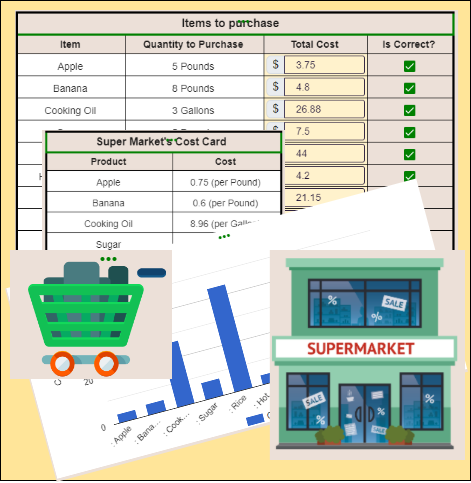Fractions: Computing the Total Purchase Cost

Activity Description
In this activity, students will use their knowledge about fractions, multiplication of fractions with whole numbers, subtraction of fractional numbers to solve a real world problem.
Problem Statement: The student is asked to go to the supermarket to purchase some grocery items and the mother has given $100 for the purchase. But the students is doubtful whether the $100 will be enough or not. To make sure that the student has enough money, he/she pulls up the cost card (unit rate card) of the supermarket from internet and tries to compute the total cost of the purchase. Student will identify that he/she was right and needs some extra money to purchase all the items.
Students will also analyze a bar chart that shows the purchase cost of each item and then will compare the bars to find which items needs more money and which needs less money.
The activity is very common use case but makes sure that students thoroughly understand when and why to use fraction and multiplication of fractions.
Learning Objective
Students will learn about using multiplication and subtraction in a real life scenario. The activity will ensure that students have mastered in the multiplication and subtraction operations and knows when to use them.
Teacher Tips





